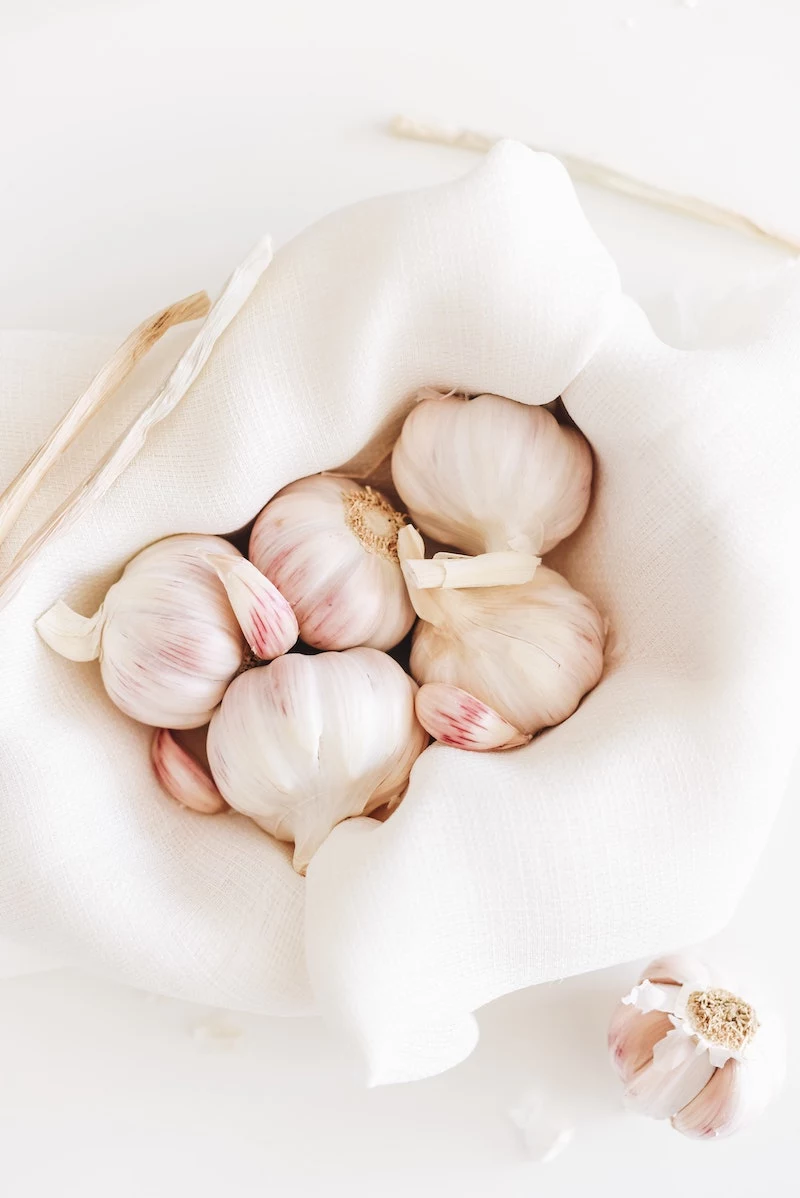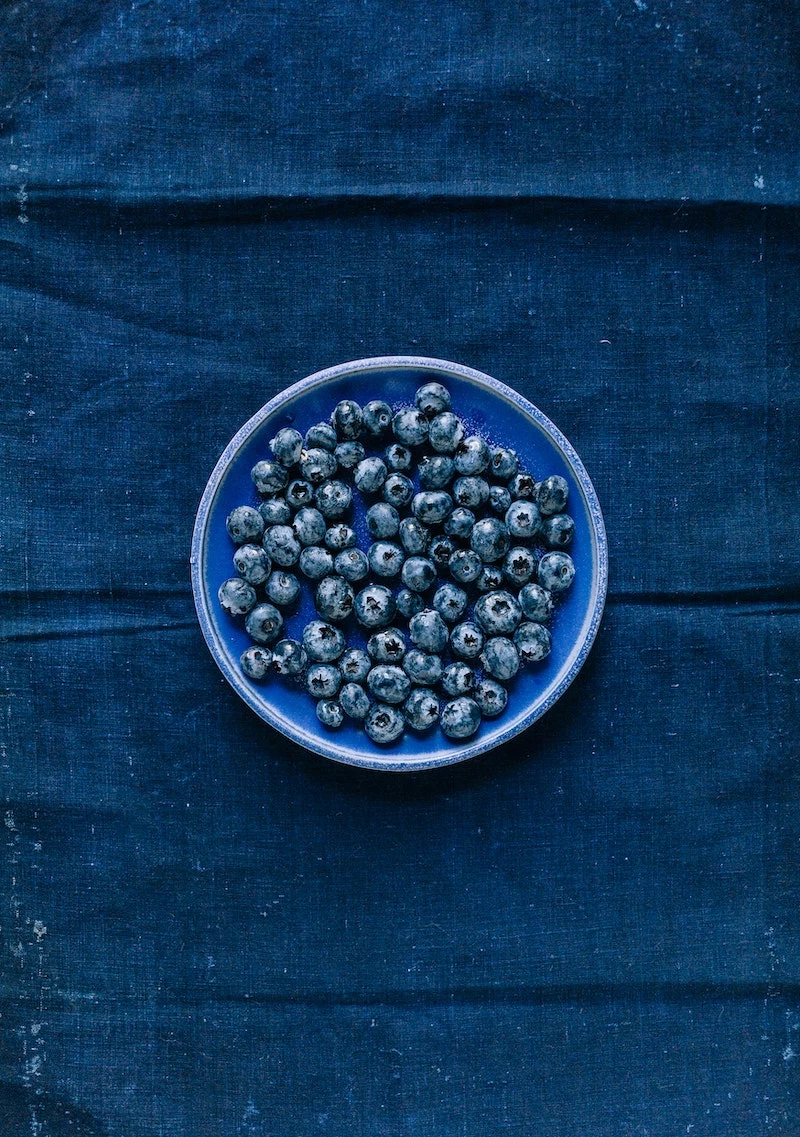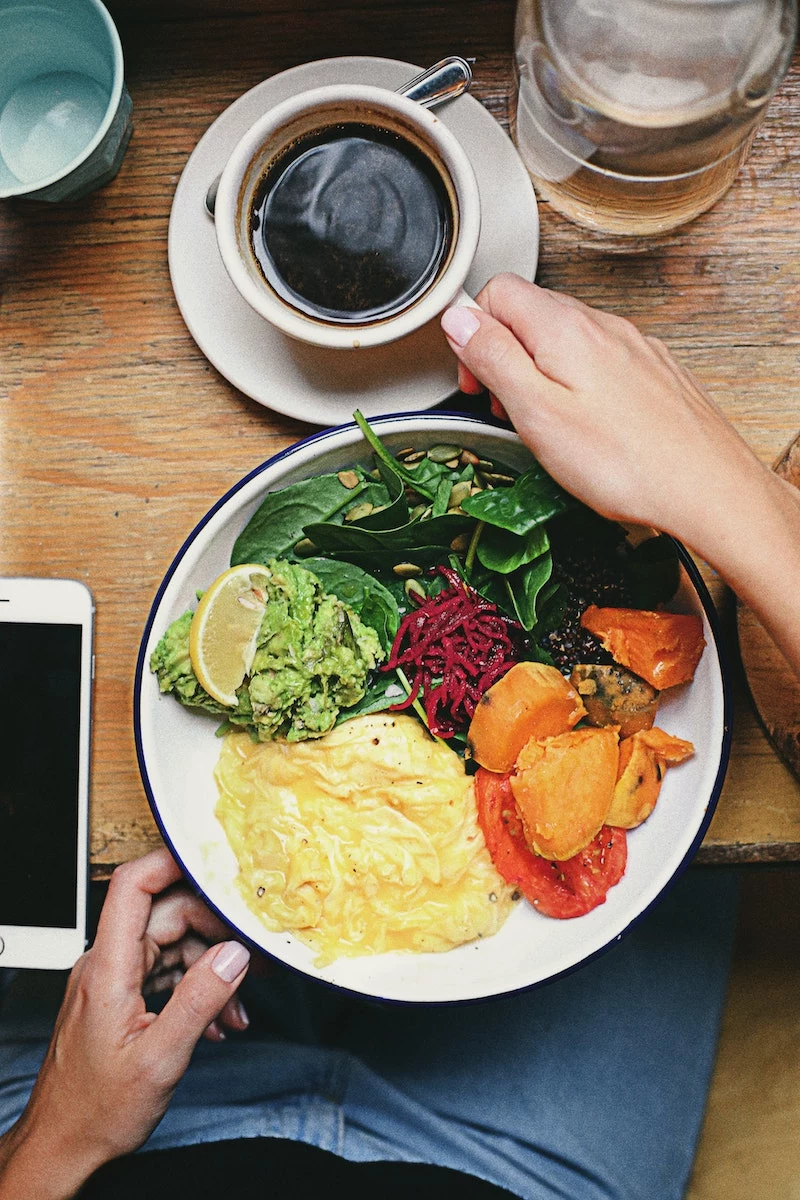Eating for a Better Mood? Here’s What Actually Works
Over my career in nutrition, I’ve sat down with hundreds of people. They show up for all kinds of reasons, but there’s a common story I hear over and over. They feel tired, foggy, and just… off. A phrase that comes up a lot is, “I just don’t feel like myself.” Inevitably, the conversation turns to what’s on their plate, and the link between food and mood becomes crystal clear.
In this article
- The Real Science Behind How Food Messes With Your Head (in a Good Way)
- The Building Blocks: Foods to Add to Your Plate
- Foods to Be Mindful Of (And Why They Can Drag You Down)
- Your Mood-Boosting Starter Kit: A Simple Shopping List
- Putting It All Together Without the Stress
- A Quick Word on Supplements
- The Bottom Line: Food Is a Powerful Tool, But It’s Not the Only One
- Inspirational Gallery
But let’s be super clear about one thing right from the start. Food isn’t a magical cure for clinical depression or anxiety. Those are serious medical conditions that need professional care from a doctor or therapist. My role is to support treatment plans, not to replace them. Think of it this way: a good diet is like building the strongest possible foundation for your house. It won’t stop a hurricane, but it sure helps you withstand the everyday storms.
So, instead of talking about misleading “natural antidepressants,” let’s focus on building a “mood-supportive” way of eating. It’s a practical, honest approach. The goal is to give your brain the raw materials it needs to run smoothly. And how long does it take to notice a difference? You won’t feel like a new person overnight, but many people I’ve worked with report better energy and less brain fog within one to two weeks of making consistent changes. The deeper mood benefits build up over time.

The Real Science Behind How Food Messes With Your Head (in a Good Way)
To really get on board with this, you need to understand the “why.” It’s not woo-woo stuff; it’s just biochemistry. Once you get it, making the right choices becomes so much easier.
First up is the Gut-Brain Axis. That “gut feeling” you get? It’s a real thing. Your gut is lined with so many nerve cells that some experts call it the “second brain.” It’s in constant contact with your head-brain via a massive nerve. What happens in your gut directly influences your mood. A huge chunk—some say up to 90%—of your body’s serotonin (the happy, feel-good chemical) is actually made in your gut. A healthy gut means a better shot at balanced brain chemistry.
Then you have the Neurotransmitters themselves. These are the chemical messengers—like serotonin, dopamine (for motivation), and GABA (for calm)—that run your mood. Your brain builds these messengers from the stuff you eat, mainly amino acids, vitamins, and minerals. If you don’t supply the right materials, you can’t expect the factory to run properly. It’s like asking a builder to construct a house without any bricks.

Finally, there’s Inflammation and Oxidative Stress. Think of chronic, low-grade inflammation as a low-level fire burning throughout your body, including your brain. A diet high in sugar and processed junk food fuels this fire. Oxidative stress is like rust; it’s damage to your cells caused by unstable molecules. Antioxidants from food are what protect you from this rust, keeping your brain cells healthy.
The Building Blocks: Foods to Add to Your Plate
Okay, let’s get to the good stuff. Instead of a boring list, think in terms of food groups. This gives you flexibility and helps you build meals that you actually enjoy.
1. Complex Carbs for Steady Fuel
Simple carbs like sugar and white bread cause a blood sugar spike, followed by a crash that leaves you irritable and anxious. Complex carbs digest slowly, providing a steady stream of energy. Think oats, quinoa, brown rice, sweet potatoes, and beans. A quick tip: these carbs also help an amino acid called L-tryptophan get into the brain, where it’s used to make serotonin. That’s why a piece of turkey is more effective for mood when paired with a sweet potato—the combo is the key.

2. High-Quality Proteins for Brain Messengers
Amino acids from protein are the literal building blocks for your neurotransmitters. You need them! Good sources include chicken, fish, lentils, beans, and tofu. And let’s talk about eggs. Seriously, eggs are a superstar. They’re affordable and packed with protein and a nutrient called choline, which is vital for memory and mood regulation. Starting your day with a couple of eggs instead of a sugary cereal can set a stable foundation for the whole day.
By the way, if you can spring for pasture-raised eggs (which can run $6-7 a dozen), they often have a better fatty acid profile. But honestly, a conventional egg (closer to $3) is still a million times better than no egg at all.
3. Omega-3 Fats to Cool Inflammation
Your brain is about 60% fat, so the type of fat you eat matters. A lot. Omega-3s are critical for keeping brain cell membranes flexible and fighting inflammation. The best sources are fatty fish like salmon, mackerel, and sardines because they contain EPA and DHA, the most useful forms. Plant sources like walnuts, chia, and flaxseeds are great too, but the body isn’t very good at converting them to the most powerful forms. If you don’t eat fish, it’s worth talking to a professional about a good algae-based omega-3 supplement.

Heads up! Omega-3s can have a blood-thinning effect, so if you’re on medication like warfarin, you absolutely must talk to your doctor before adding a supplement.
4. Antioxidant Powerhouses to Protect Your Brain
Eat the rainbow. It’s cliché, but it’s true. The bright colors in fruits and veggies are from antioxidants that protect your brain from that “rusting” process. Blueberries are famous for a reason. And a pro-tip for your wallet: frozen blueberries are just as nutritious as fresh, often cheaper (around $4 for a decent-sized bag at most grocery stores), and perfect for smoothies.
Don’t forget greens like broccoli and spinach. A lesser-known trick with broccoli: Chop it up and let it sit for about 30 minutes before you cook it. This activates a powerful anti-inflammatory compound. Then, just steam it lightly. Boiling it to mush kills all the good stuff.
5. Fermented Foods for a Happy Gut
To support that gut-brain connection, you need probiotics—the good bacteria. Find them in foods like plain yogurt (check for “live and active cultures”), kefir, sauerkraut, and kimchi. When buying sauerkraut, look for the raw, unpasteurized kind in the refrigerated section. The shelf-stable cans have been heat-treated, which kills the beneficial microbes. A small serving a few times a week is a great place to start.

Foods to Be Mindful Of (And Why They Can Drag You Down)
It’s just as important to know what to limit. This isn’t about guilt; it’s about understanding the impact.
- Excessive Sugar: That sugar high is followed by an inevitable crash, which can mimic the feelings of anxiety and irritability. It also feeds the bad bacteria in your gut.
- Ultra-Processed Foods: Think packaged cookies, sugary cereals, and fast-food meals. They’re often loaded with sugar, unhealthy fats, and artificial ingredients that promote inflammation.
- Industrial Seed Oils: Oils like soybean, corn, and canola are extremely high in omega-6 fatty acids. We need some, but our modern diet has way too many, which can throw off our inflammatory balance. Swapping these for olive oil, avocado oil, or coconut oil is a simple, powerful change.
Your Mood-Boosting Starter Kit: A Simple Shopping List
Feeling overwhelmed? Don’t be. Here’s a basic list to get you started.

- Proteins: Eggs, canned salmon or sardines (a super budget-friendly option, usually $2-$4 a can), a bag of lentils, canned chickpeas, plain Greek yogurt.
- Complex Carbs: Rolled oats, quinoa, a bag of sweet potatoes.
- Healthy Fats: A bottle of extra virgin olive oil, avocados, a bag of walnuts or almonds.
- Produce: A bag of spinach, a head of broccoli, a bag of frozen blueberries, lemons, and garlic.
- Bonus: A jar of raw sauerkraut and some 70%+ dark chocolate (it’s a great source of magnesium!).
Putting It All Together Without the Stress
This is what a day of mood-supportive eating can look like. Notice it’s real food, not diet food.
Instead of a sugary latte and a pastry for breakfast, try two scrambled eggs with a handful of spinach and a slice of whole-grain toast. This protein-and-fat combo prevents the mid-morning energy crash.
For lunch, instead of a boring sandwich on white bread, build a huge salad with greens, grilled chicken or a cup of chickpeas, some avocado, and a simple olive oil and lemon juice dressing.

For dinner, instead of white pasta with sugary jarred sauce, try a piece of baked salmon with a big serving of roasted broccoli and about a fist-sized portion (around one cup) of quinoa. This plate is loaded with omega-3s, antioxidants, and steady-burning fuel to help you wind down.
The number one excuse I hear is, “I don’t have time to cook.” The solution is a little prep. On a Sunday, spend one hour roasting a big pan of veggies, cooking a batch of quinoa, and hard-boiling some eggs. Or try this hack: make smoothie packs. Into a few Ziploc bags, toss a handful of spinach, a tablespoon of chia seeds, and a cup of frozen berries. In the morning, just dump one in the blender with some yogurt or milk. Breakfast is done in 60 seconds.
A Quick Word on Supplements
While food should always be your first-line strategy, some supplements can be helpful for filling in the gaps—but please, chat with your doctor before starting anything new to get the right advice and dosage for you.
Three common ones to ask about for mood are:
- Vitamin D: The “sunshine vitamin” is crucial for mood regulation, and many people are deficient, especially in the winter.
- Magnesium: This mineral is involved in hundreds of bodily processes, including calming the nervous system. Magnesium glycinate is a form that’s typically well-absorbed and easy on the gut.
- B-Vitamins: B-complex vitamins, especially B6, B12, and folate, are critical for producing neurotransmitters.
The Bottom Line: Food Is a Powerful Tool, But It’s Not the Only One
I cannot stress this enough. I’ve seen this way of eating change lives. But I’ve also seen people who eat a “perfect” diet and still struggle deeply. That’s because mental health is incredibly complex. It involves genetics, life events, trauma, and so much more than just what’s for dinner.
Food is the foundation, not the whole house. Your toolbox should also include exercise, quality sleep, social connection, and most importantly, professional help. If you are struggling, your first and most important step is to speak with a doctor or a licensed mental health professional. They are the only ones who can give you a proper diagnosis and a comprehensive treatment plan.
And a final, critical warning: Never, ever stop taking a prescribed medication to try a “natural” approach instead. This is extremely dangerous. Any changes to your medication must be done under the strict supervision of your doctor.
My challenge to you: For one week, just focus on breakfast. Swap whatever you normally have for one of the protein-rich options mentioned above. Just that one change. See how you feel around 3 p.m. You might be surprised.
Inspirational Gallery
That mid-afternoon slump where you feel irritable and foggy? It’s often a direct result of a blood sugar crash. A sugary snack or refined-carb lunch gives you a quick spike of energy, but the subsequent drop leaves your brain feeling starved and your mood in the gutter. Opting for a balanced meal with fiber, protein, and healthy fats provides a slow, steady release of energy, preventing the crash-and-burn cycle that sabotages your well-being.
- Less brain fog and better concentration.
- More stable energy levels, avoiding afternoon slumps.
- A calmer nervous system, thanks to key minerals.
The secret? A diet consistently rich in B vitamins. These powerhouses are crucial for converting food into energy and synthesizing neurotransmitters. Find them in eggs, leafy greens, legumes, and salmon.
A single ounce of dark chocolate (70-85% cacao) provides over 15% of the Recommended Daily Intake for magnesium.
This isn’t just a sweet treat; it’s a functional food. Magnesium is known as the ‘relaxation mineral’ for its role in regulating the body’s stress-response system. Beyond that, flavonoids in dark chocolate have been shown to increase blood flow to the brain, potentially boosting cognitive function and mood.
Important point: You might be moody simply because you’re thirsty. Even mild dehydration can impair concentration, increase feelings of anxiety, and lower your mood. Before reaching for a snack, try drinking a large glass of water and waiting 15 minutes. The brain is about 75% water, and it needs constant replenishment to function optimally.
Wondering what to eat for a quick brain boost?
Think beyond coffee. Tryptophan is an amino acid that serves as a precursor to serotonin, the ‘feel-good’ neurotransmitter. Pairing a tryptophan-rich food with a small number of healthy carbs can help it cross the blood-brain barrier more effectively. A perfect example is a handful of walnuts with an apple, or a small bowl of Greek yogurt with a few berries.
The Mediterranean diet isn’t just a heart-healthy trend; it’s a blueprint for mood-supportive eating. It’s naturally rich in all the key players: omega-3 fatty acids from fish and olive oil, antioxidants from vibrant fruits and vegetables, and slow-release energy from whole grains and legumes. It’s more than a diet; it’s a lifestyle that inherently provides the brain with the diverse nutrients it needs to maintain chemical balance and fight inflammation.
For a brain that feels resilient and calm, focus on getting enough magnesium. This essential mineral is involved in over 300 biochemical reactions in the body, including nerve function and mood regulation. Many people don’t get enough.
- Leafy Greens: Spinach and Swiss chard are top sources.
- Nuts & Seeds: Almonds, cashews, and pumpkin seeds are potent choices.
- Avocado: A delicious way to get magnesium and healthy fats.
- Legumes: Black beans and edamame pack a powerful punch.
Plant-Based Omega-3s (ALA): Found in flaxseeds, chia seeds, and walnuts. Your body can convert ALA into the more powerful forms, EPA and DHA, but the conversion rate is often inefficient.
Marine Omega-3s (EPA & DHA): Found in fatty fish like salmon, mackerel, and sardines. These are the forms the brain uses directly for cell structure and signaling, making them more potent for mood support.
For optimal brain health, prioritize marine sources, but absolutely include plant-based ones for their added fiber and nutrients.
The gut is home to trillions of microorganisms that produce hundreds of neuroactive substances, including about 90% of the body’s serotonin.
A simple way to support your gut-brain axis is to introduce fermented foods. You don’t need a lot to make a difference. Try adding a tablespoon of kimchi to your eggs, sipping on a small glass of kefir from a brand like Lifeway, or using miso paste to make a quick soup. These foods deliver beneficial live bacteria (probiotics) that help foster a healthy gut environment, which is directly linked to better mood regulation.










